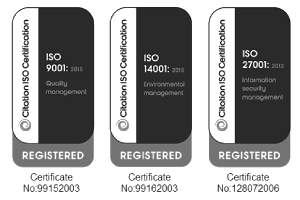Striking gold: redeveloping facilities for the public good
We spoke to Richard Shwe, Deputy Chief Executive (Commercial and Development) at St Albans City and District Council about generating a new income stream through redevelopment of leisure and cultural facilities.
A decade ago, St Albans City and District Council was faced with ageing leisure, sports and cultural facilities that were a drain on resources. They were costly to maintain, poorly-located and failing to meet residents’ expectations.
In a radical move during a period of budget constraint, the Council decided to embark on a redevelopment programme. It has since invested in enhancing the facilities for the public good and in making them more commercially viable.
Over a four year period, it opened three new leisure and sports centres at a combined cost of £37m. These new facilities, two in St Albans and one to the south of the District in London Colney, are profitable and generating a significant annual income for the Council.
We have also just opened a £7.75m St Albans Museum + Gallery in a newly-renovated Georgian building in the City centre. By hosting exhibitions of national significance, weddings and conferences, the museum is expected to generate an income stream to offset running costs.
In addition, we are planning to develop a new £18.8m leisure and cultural hub to serve Harpenden and the surrounding area in the north of the District. Scheduled for completion in early 2021, this too is expected to provide additional income for the Council.
Financing these redevelopment projects was a challenge. Feasibility studies showed that investing in improved facilities would boost their commercial viability by making them more appealing to the growing local population. However, there was limited investment capital available and raising Council Tax to fund improvements was not an option with so many other priorities. We have therefore had to be creative in identifying new funding sources.
First, we focused on redeveloping the leisure and sports facilities. With national headlines about obesity and an ageing population, there was a desire and a strategic need to provide affordable leisure facilities for public health reasons.
Initially, we looked at using leisure developers to build and then operate new sports and leisure centres on our behalf. However, at the time they were reining back on new-build projects due to an uncertain economic environment that led to borrowing constraints. Also, our main flagship project, the £24.1m Westminster Lodge Leisure Centre, was too complex and large in scale for leisure developers to take on.
So, the Council decided to go it alone, financing and project managing the builds. Following a review of our leisure stock, we decided to close one facility and replace our other ageing buildings. This strategy resulted in annual revenue savings that were used to service repayments on prudential loans, taken out to help fund the new builds. The borrowings were made through the Public Works Loan Board at better interest rates than commercial developers would have paid. As a Council, we were also able to access a variety of funds, grants and resources unavailable to developers. For example, these have included s106 developer contributions; growth area funding and grants from Sport England and the Lawn Tennis Association.


.png)



.png)